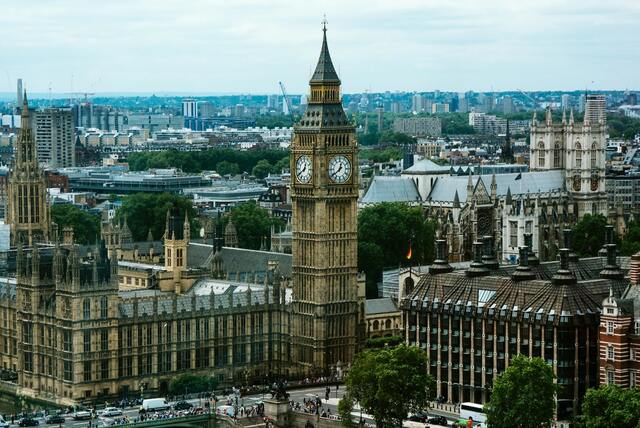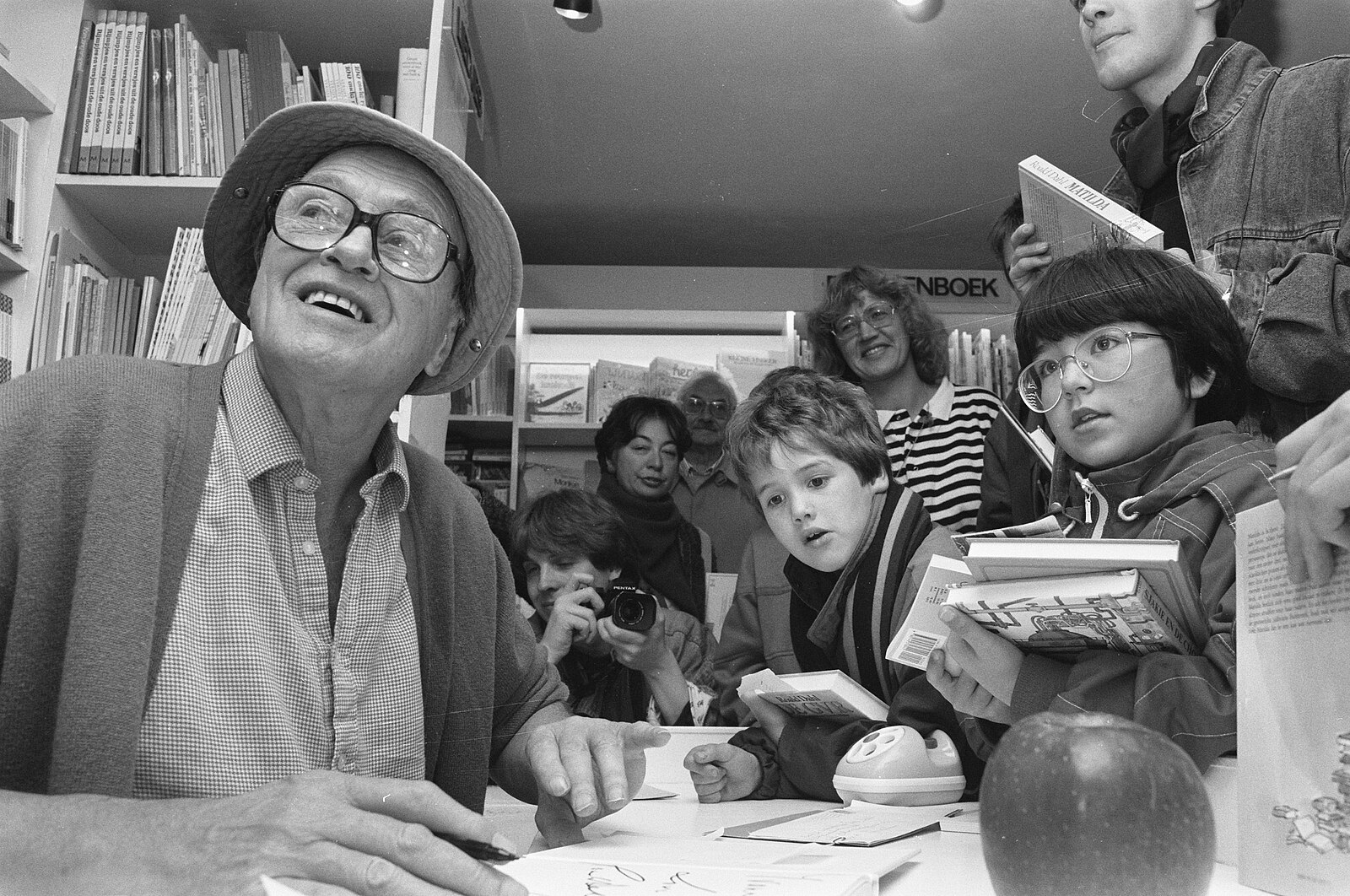18 Facts About London That You Probably Didn’t Know

Unsplash: Jamie Street
When in London, you might want to keep calm and carry on until you find a lovely house at 17 Cherry Tree Lane. Perhaps, the Banks family living there might welcome you with a supercalifragilisticexpialidocious greeting. Oh, hello London! Pleasure to meet you.
Okay, there is one thing I must share with you about this lovely abode located at 17 Cherry Tree Lane in London… it doesn’t exist. Well, yeah it really doesn’t exist. Not to worry, there are many streets in London that resemble Cherry Tree Lane. In the springtime, they are especially blooming with different shades of pink from the ever-so-lovely cherry blossom trees.

Giphy
London is not just a place where our delightful Mary Poppins like to come and play. And that’s because the capital city of England is bustling with a rich history and stories galore that are waiting for you. So, spit spot. And off we go on an English reading adventure, discovering interesting facts about charming London.
If you’re still wearing your explorer boots, ready to explore the rest of the United Kingdom in the comfort of your own favorite cozy spot, then check out Beelinguapp now. Learn a new language by reading your fascinating stories like The Beatles, Princess Diana of Wales, The Children of Lir: An Irish Legend, and more.
1. The smallest City in England is London.
The City of London is actually about 1.2 square miles in size, otherwise known as the "Square Mile" and it has a population of roughly 7,500 people. On the contrary hand, Greater London is a 606 square mile area of England that is home to around 8.7 million people.
2. Big Ben isn't really called Big Ben.
Sorry to burst your bubble, but that iconic London tower you’ve been calling Big Ben isn’t really called Big Ben. Actually, the clock in the Tower is the one that is called “Big Ben.” In honor of the Queen's diamond jubilee, the famed Tower's name was changed from Clock Tower to Elizabeth Tower in 2012.
3. There are over 170 museums in London, including 11 national ones.
London is home to more than 170 museums and most of them are free. Some of the best museums and art galleries in the world, including The British Museum, National Gallery London, Tate Modern, Science Museum, Royal Museums, and Imperial War Museum, are also located in the city.
4. London is considered a forest.

Unsplash: Bruno Martins
There are almost as many trees in London as there are people. According to a UN definition, any area that has at least 20% trees is considered a forest. And trees cover around 21% of the land in London, making the city an urban forest. In fact, 8.6 million people are known to live alongside 8.3 million trees.
5. There are six ravens in the Tower of London.

There are six resident guardian ravens of the Tower of London: Harris, Jubilee, Poppy, Gripp, Erin, Branwen, and Edgar. They are intelligent birds that only respond to the Ravenmaster, and people should avoid getting too close to them because they can bite if they feel that their area is being threatened.
6. The city has a Peter Pan Hospital.
In 1929, the Peter Pan novelist JM Barrie was asked to join a group that was looking to buy a piece of land to build a new wing for the Great Ormond Street Hospital or GOSH. Instead of joining the committee, Barrie generously donated the Peter Pan copyrights to GOSH. Since then, royalties from all Peter Pan performances and retail sales have helped GOSH, helping to pay for the ongoing care of seriously-ill children every day.
*Read Peter Pan in English, French, Spanish, Korean, German and more with Beelinguapp!
7. Over 300 languages are spoken in London.
According to research, there are more than 300 languages spoken in London, making it the most linguistically diverse city in the world. The top five non-English languages reportedly spoken are Polish, Turkish, Bengali, French, and Punjabi.
8. London was once the capital of 6 countries at the same time.
In World War II, London served as the governing capital for other European countries which were conquered by Germany. The leaders of Norway, Poland, Belgium, France, and The Netherlands stayed in London between 1939 and 1945.
9. Feeding the pigeons in Trafalgar Square is illegal.

Unsplash: Robert Linder
Although pigeons (or, as the locals refer to them, "flying rats") are an important feature of Trafalgar Square, it is illegal to feed them, and seed sellers have been banned from the area since 2003. However, protesters still feed these hungry birdies on its northern terrace. Tuppence a bag, you say… better think carefully.
10. The world's oldest underground rail network is in London.
The first public transportation system to use steam engines was the London Tube. On January 10, 1863, the Metropolitan line's first segment from Paddington to Farringdon opened. Five years later, a second underground line went into operation. Metropolitan number 23 is the oldest surviving steam locomotive and it is on display at the London Transport Museum.
11. The quintessential double-decker buses weren’t always red.
The double-decker buses that run across London aren't always red. At one point, they were all painted a different color to represent the different routes they travel. But in 1907, the London General Omnibus Company decided to paint its buses with a striking shade of red to distinguish itself from the competitors. Ever since then, the iconic red double-decker buses have been roaming and rouge-ing the streets of London.
12. Some parts of London have been inhabited as early as 4000 BC.
Archaeologists found flint tools close to Happisburgh that were used by hominoids, sometimes known as early humans, during the warmer interglacial periods around 900,000 years ago.
It is believed that Ice Age humans made the earliest known cave art in England at Creswell Crags about 13,000 years ago.
Researchers also discovered the oldest human remains, which date to roughly 500,000 years ago. The remains belonged to a Homo heidelbergensis guy who stood six feet tall.
13. There are some streets in London with derogatory names.
More than 20 streets in London have names that are extremely sexual, provocative, and at the same time humorous. These streets have very suggestive and explicit names that express what they were renowned for. A few streets include Helmet Row, The Butts and Upper Butts, Newington Butts, White Knobs Way, Copping Close, Fanny Hands Lane, Bird in Bush Road, Clitheroe Road, Kings Butts, Melon Road, Ogle Street, Cumming Street, Swallow Street, Hooker's Road, Cock Pond, and Cock Lane.
14. Flying a kite is illegal.
The Metropolitan Police Act of 1839 states that it is illegal to fly a kite in parks, other public areas, or in a way that annoys other people. And if you ever fly a kite in violation of the law, you risk receiving a fine of up to £500.
There are basic rules and tips for flying a kite that you must follow:
- Don’t fly your kite in wet or stormy weather.
- Don’t fly your kite close to roads or paths that may distract vehicles.
- Don’t fly your kite above 60 meters or 200 feet near airports or any flight path.
- Don’t fly your kite near power lines.
- Always clean up after flying kites and wear gloves while using strong pulling kites.
15. The Palace of Westminster was built on the bank of the Thames.
The two houses of Parliament of the United Kingdom hold their meetings at Westminster Palace. The Palace is situated on the north bank of the River Thames for a specific purpose: to avoid ever being surrounded by a mob.
16. Cleopatra’s Needle is a time capsule.
Muhammad Ali, the king of Egypt and Sudan, presented Cleopatra's Needle to the United Kingdom in 1819 as a tribute to Lord Nelson's victory at the Battle of the Nile and Sir Ralph Abercromby's victory at the Battle of Alexandria in 1801. However, the ancient Egyptian obelisk stayed in Alexandria until Sir William James Erasmus Wilson offered £10,000 to have it transported to London in 1877. The obelisk was finally placed on the Thames Embankment on September 12, 1878. Along with the construction of the obelisk, a time capsule was placed in the front part of the pedestal with the following items:
- A box of hairpins
- A baby’s bottle
- Pictures of the 12 most beautiful English women at that time
- A rupee
- A complete collection of British coins
- A box of cigars
- Some children’s toys
- A shilling razor
- A map of London
- A copy of the Whitaker’s Almanack
- Copies of 10 daily newspapers
- A 3-foot Bronze replica of the monument
- A portrait of Queen Victoria
- A hydraulic jack and small samples of the cable used in the erection
- A history of how the monument was transported
- Plans on vellum
- A translation on the inscriptions
- Several copies of the Bible in different languages
17. London has hosted the Olympics three times.
London has hosted the Olympics three times, in 1908, 1948, and 2012, making it the only city in the world to do so.
18. About a thousand bodies are buried beneath Aldgate Station.
The Aldgate tube station is well known for having been built over a Bubonic Plague mass grave that was uncovered by construction workers in the 1860s. According to reports, the discovered burial site is 40 feet long and 16 feet wide.
Get Beelinguapp

